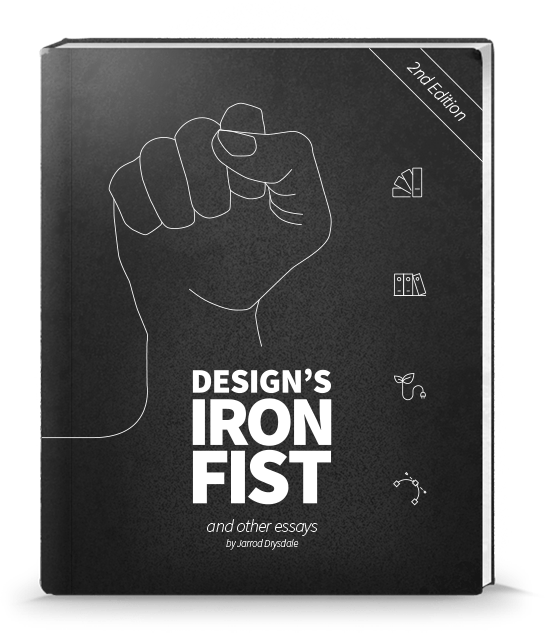Tell me if this story sounds familiar.
You’re working on a new design, and it’s coming together like magic. Every idea you have clicks into place perfectly. The mockup looks amazing. It might be your best all year. You’re exhilarated.
The next morning, you sit down at your desk and open up that mockup. The thing you see before you is dumbfounding.
It looks downright awful!
How did this happen?! Yesterday, that design seemed perfect to you. It came together so quickly, and you were confident in the quality.
You’ve heard of beer goggles, right? Well, you had design goggles on.
Even after over 10 years as a designer, on occasion I will get pumped about a concept, design it, and then look at it the next day and realize it is horrible. (And, no, I’m not gonna show you an example. Ha.)
Creativity has a way of betraying you. Inspiration will stab you in the back.
Sometimes our work can have a fickle nature, and this is why designers have to face a reputation of being unreliable, wishy-washy, or other negative qualities often ascribed to “creative types”.
The truth is that making bad concepts is part of the creative process. We have to get the bad ideas out of the way before the good ones will show up.
Unfortunately, sometimes we trick ourselves into thinking a bad idea is good, and spend too much time on it.
That’s why I encouraged you to make quick ugly sketches, remember?
Experience helps, too.
But, like I said, I’ve been doing this a decade and I still fall into that trap sometimes.
Here’s how you can protect yourself from the bad ideas masquerading as design genius, and how you can avoid being that stereotypically unreliable designer without giving up on the creative spirit in your work.
Sleep on it
No matter how excited about and confident in a design you are, never present it on the same day you made it.
Take a night to sleep on it, and think it over. That minimal amount of separation can be all you need to see the design objectively, without design goggles.
Compare your design to other people’s designs
Open up your mockup alongside some swanky award-winning design by an internet famous designer. Compare them.
This might seem futile. After all, those designs are for different businesses and solve different problems entirely.
However, something about forcing yourself to compare your design to something you know is already good can reset your quality standard. It’s like taking off the goggles.
Comparison—even if functionally useless in judging if a design will be successful—is a little hack to jig your crooked mind back into looking at your own work objectively.
Get a second opinion
If you work at an agency, you’re probably lucky to have other designers around. Ask them for a quick critique.
If you work remotely like I do, it’s immensely helpful to have a network of peers you can email or DM in these cases. Why not even reach out to another designer you follow on Twitter for help? You’d be surprised how many are willing to give you a quick opinion. Because, all designers know what it’s like to be stuck with the goggles on.
Give yourself a tighter deadline
Sometimes, the pressure of a deadline can jolt you out of your comfortable, creatively lazy mindset and back into “I need to finish this now” mode.
When you have extra time, you have the luxury of filling it by dwelling on unworthy ideas. So, instead of letting that happen, cut the extra time. Impose a new, imaginary deadline on yourself. Challenge yourself to get the design done faster.
You might just find that the bad ideas become more obvious.
Have a plan for if your idea turns out to be bad
So often, newer designers will miss a deadline or just quit a project altogether when they realize they wasted all the available time on a bad concept, and can’t imagine a way to dig back out of the hole.
I’ve done this. I’m sure most designers have.
I’m sorry to say that the only way to keep this from happening is to get more experience.
But, you can plan for it. Know that sometimes, that design you spent extra time making is going to end up being something you can’t present to the client.
Always have a backup concept.
Always pad your projects enough that you can recover if a concept leads you astray.
Always explore your favorite concept thoroughly in sketches, brand mood boards, and/or type studies before investing deeply into a mockup.
…
All designers have bad ideas. But, the best designers expect this and refuse to let bad ideas ruin their day.
